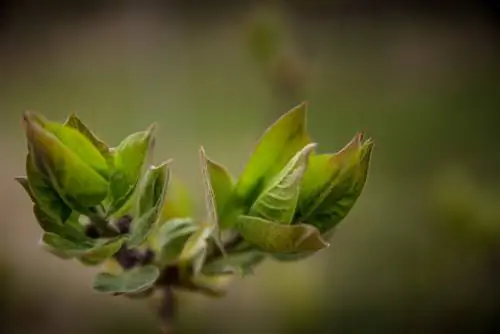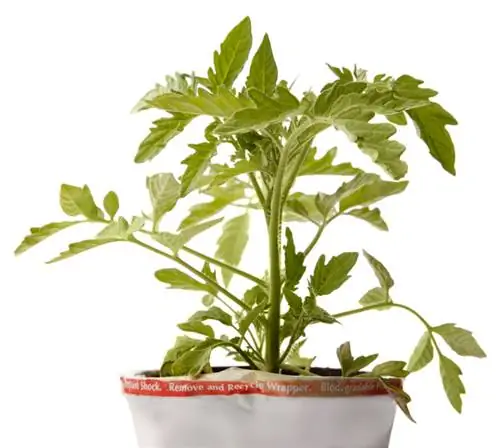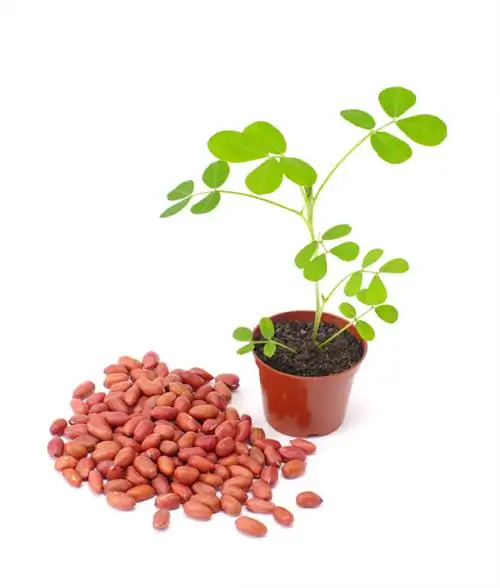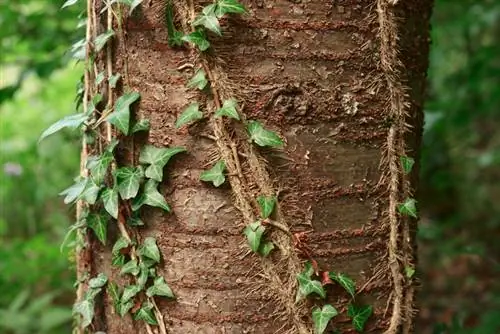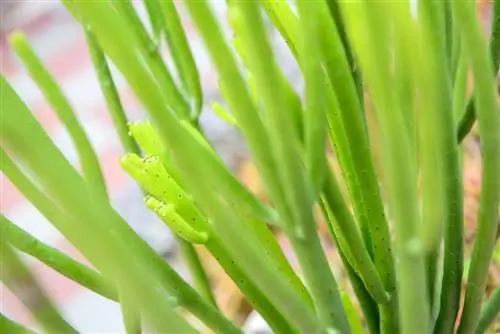- Author admin [email protected].
- Public 2023-12-16 16:46.
- Last modified 2025-01-23 11:21.
Lilac (Syringa vulgaris) prefers moderately nutrient-rich, rather dry soil and a location that is as sunny as possible. There are numerous species and varieties that can only be propagated using cuttings. However, propagation via seeds is rare for lilacs.
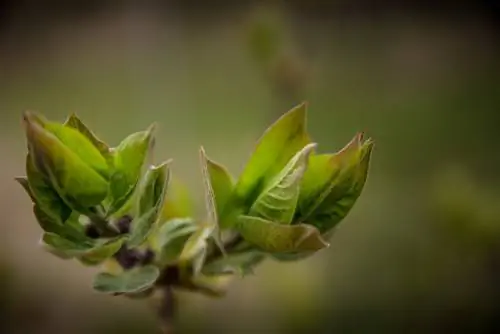
How to make lilacs take root?
To let lilacs take root, cut a 15-20 cm long young cutting in spring, remove most of the leaves and plant it in lean sowing substrate. Covered with a translucent hood, watered and ventilated regularly, roots and new growth form.
Cut and pot lilac cuttings
The best time to take a lilac cutting is spring. In May or June, if possible, cut off young side shoots that are 15 to 20 centimeters long so that a piece of last year's main branch remains on the cutting. In addition to these axillary cuttings, lilac can also be propagated very well via shoot or head cuttings, provided they are young shoots. Of course, these must not have any flowers.
Select and prepare cuttings
The mother plant from which you take the cutting must be absolutely he althy and growing normally. Over-fertilized lilacs often show excessive growth, and these cuttings are usually very weak. Also, do not use parts of the plant that are too stunted and make sure that the lilac is not affected by diseases or pests. After cutting the cuttings, remove the majority of the leaves so that the loss of water through evaporation is not too great. It is enough if one or two pairs of leaves remain.
Planting cuttings
Fill the planter with a mixture of lean sowing soil and sand. Instead of sand, perlite, expanded clay or peat are also suitable. Fill the substrate into a small pot and insert the cutting up to a third of its total length. If you want, you can dip the lower end in a rooting powder (€13.00 on Amazon), but this is not absolutely necessary. Water the planted cutting lightly and place a cut, translucent PET bottle or a plastic bag over it.
Care for cuttings properly
Moisture is the crucial factor for root formation. The cuttings must be watered and sprayed regularly, but excess moisture must be avoided at all costs - otherwise the cutting will rot instead of growing roots. For this reason, you should ventilate the protective hood daily.
Repotting rooted cuttings
As soon as the first roots form, the cutting begins to grow and form young leaves. Now you can quickly transplant the young plant into a more nutrient-rich substrate. This is usually the case with lilacs in autumn, although you should overwinter the minis frost-free and only plant them out the following spring.
Tip
Propagation is also quite easy via root runners. However, this method only works with unrooted lilacs; refined varieties, on the other hand, develop wild shoots.

